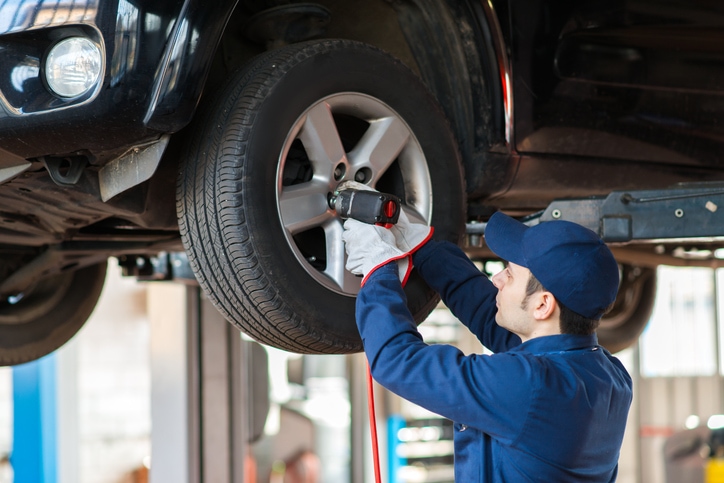Last Updated on March 8, 2024 by Asfa Rasheed
Camping is a great way to get away from the hustle and bustle of everyday life. Camping offers an opportunity for people to disconnect from their devices, enjoy nature, and spend time with friends and family. If you’re new to camping or looking for some tips on improving your skills, we’ll help by discussing six basic vehicle skills that will help you.
1. How to Change a Tire
One of the essential vehicle skills you can learn is how to change a tire. This skill shall come in handy if you get a flat while camping or on a road trip. To change a tire, you’ll need a lug wrench, a jack, and a spare tire. First, loosen the lug nuts on the flat tire using the lug wrench. Then, jack up the car and place the jack stands under the frame.
Finally, remove the lug nuts and replace the flat tire with the spare. Make sure to tighten the lug nuts securely before lowering the car back down. This will allow you to continue your trip.
2. How to Jumpstart your Vehicle
If your battery dies, you’ll need to know how to jumpstart your vehicle. To do this, remove the cables from your car’s battery. Be sure to wear safety goggles. Attach one end of the red cable to the positive post of your dead battery and attach one end of the black cable to the negative pole of the good battery. Then, clamp the other end of each cable to a good ground point on the car. Start the engine of the good battery and allow it to run for a few minutes. Then, try to start your car. If it doesn’t start, wait a few more minutes and try again.
3. How to Check Tire Pressure and Add Air
You should know how to check your tire pressure and add air to ensure that your tires are correctly inflated. Most people don’t realize how under-inflated tires can cause problems on the road. Not only do under-inflated tires have poor fuel efficiency, but they’re also more susceptible to wear and damage. If you must add air to your tires, use a tire gauge to measure the pressure. Then, use a pump or an air compressor to add air to the tires until they reach the desired pressure.
4. How to Add Windshield Wipers & Fluid
One of the most annoying issues you can run into while camping is when your windshield wipers stop working. This is why it’s essential to know how to add windshield wiper fluid and change or replace the blades on your wiper if they’re worn out. You can add windshield wiper fluid by unscrewing the cap on the reservoir and pouring the fluid in. Master all camping-related vehicle skills for a hassle-free camping experience, especially when you want to make the most out of pure golden hour Michelob Ultra and other seasonal options.
Be sure to use the kind of fluid recommended for your vehicle. To change or replace the wipers, you’ll need to remove the cowl panel from the car. Then, you can unscrew the old wipers and replace them with new ones.
5. How to Check Your Oil Level
It’s essential to check your oil level regularly, especially if you’re going on a long road trip. Low oil levels may cause the engine to overheat. To check your oil level, remove the dipstick and wipe it clean with a cloth or paper towel. Then, reinsert the dipstick and pull it out again.
Check the markings at the end of the dipstick carefully to determine if your oil needs to be changed or not. If you need to change your oil, follow the instructions on the manual for your specific vehicle.
6. How to Not Get Stuck
One of the biggest problems you’ll face while camping or having a picnic is if your vehicle becomes stuck in the mud. Luckily, there are several ways to stop this from happening. First, make sure that you don’t drive through deep water since this can cause your car to get flooded and stall.
Second, make sure to install good tires with deep treads. And finally, if you do get stuck in the mud, try using a shovel to dig out around your tires and then use rocks, boards, or other heavy objects to help push your car out.
Bottom Line
Now that you know how to change a flat tire, jumpstart a car, add air to tires, and check oil levels, you’re ready for anything that might happen on the road. Remember always to be prepared for the unexpected. If you have any other questions, be sure to consult your vehicle’s owner’s manual.
